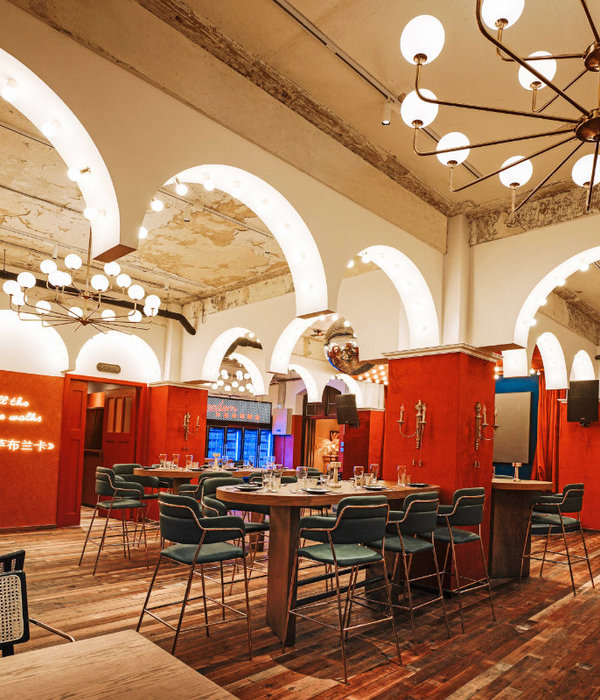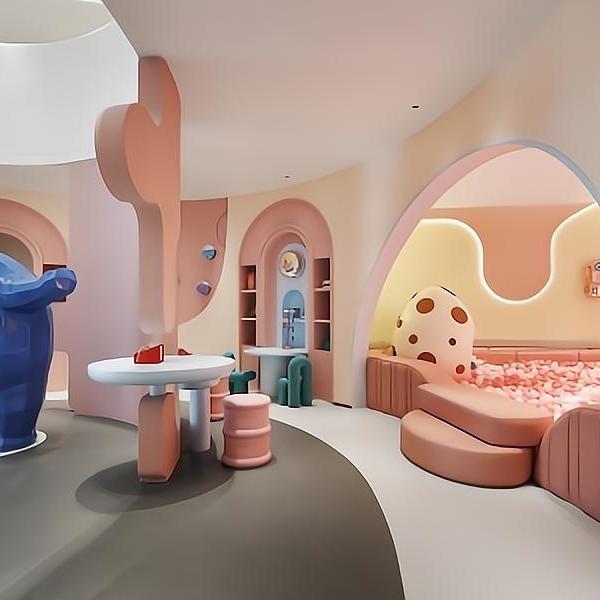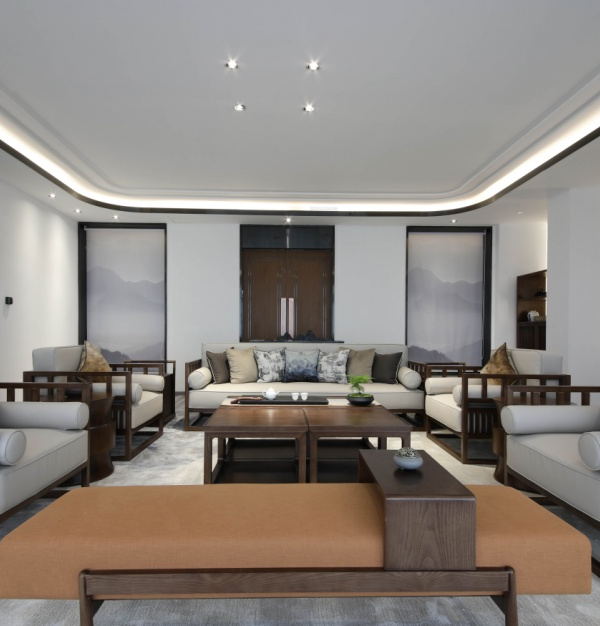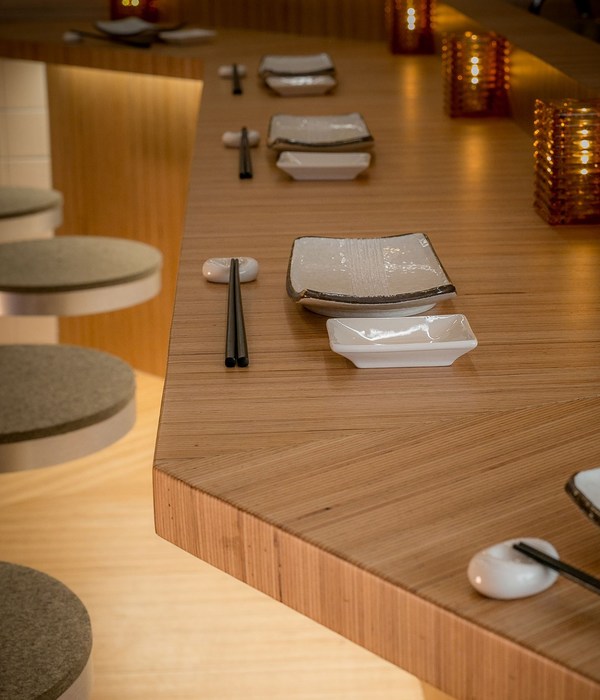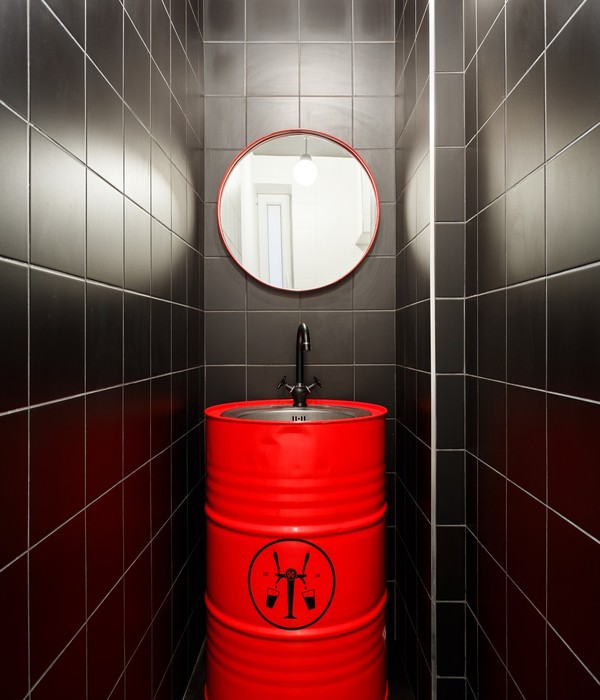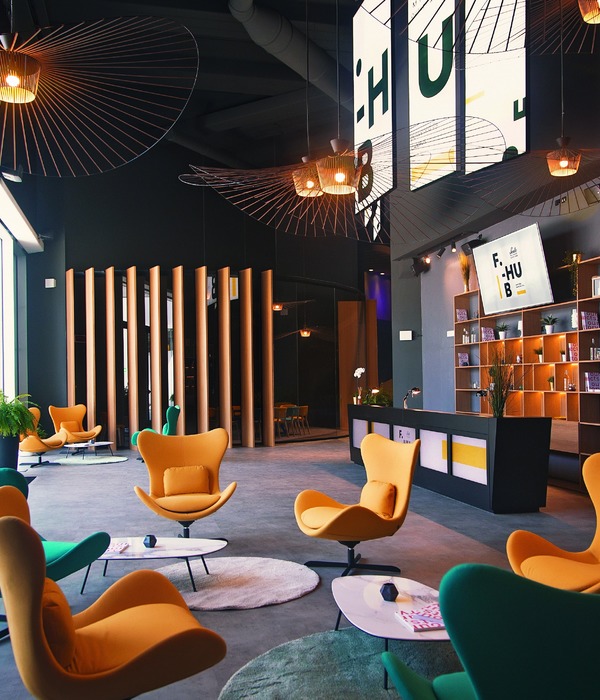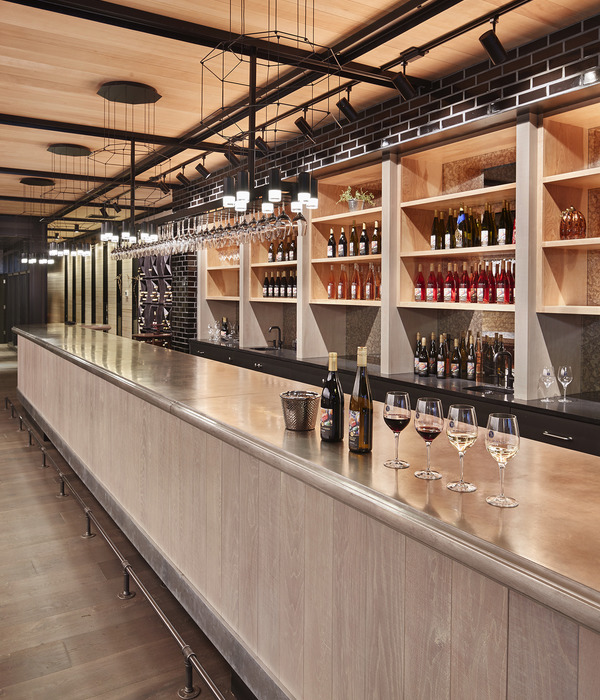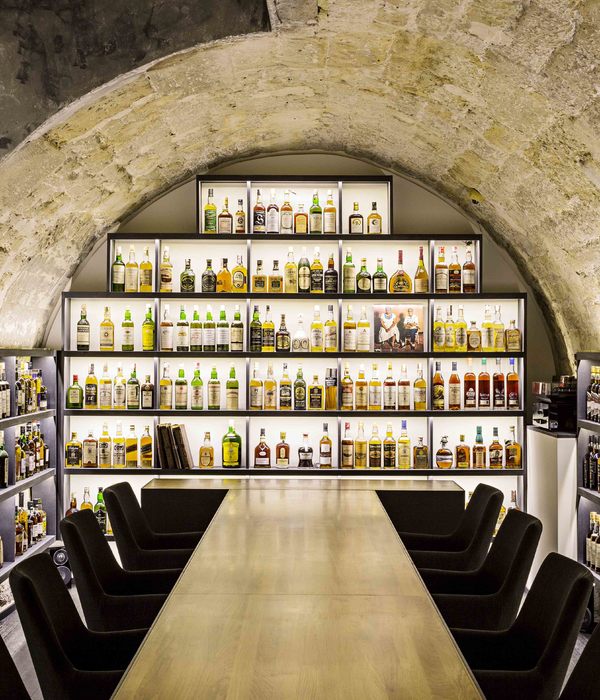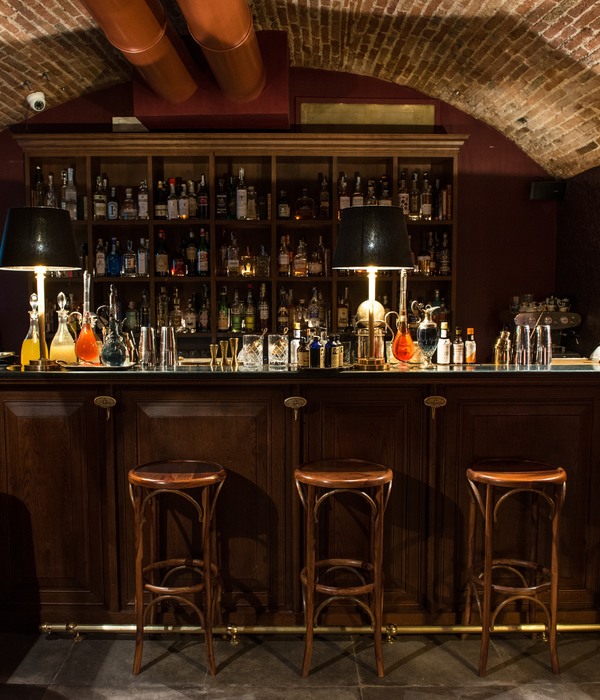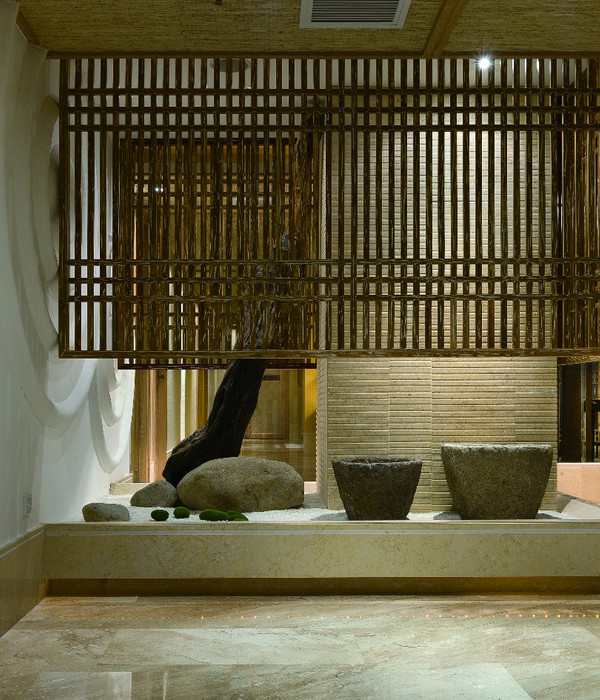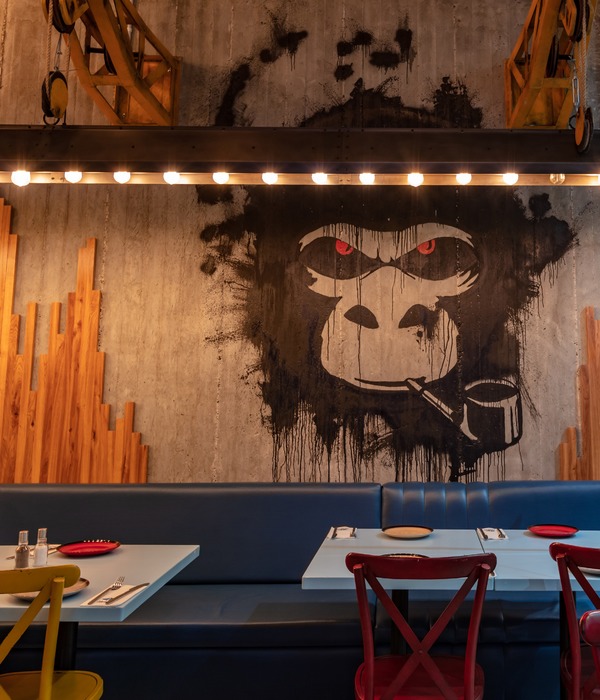架构师提供的文本描述。Parowal的Doaba公立学校位于印度旁遮普邦的一个偏远村庄。这所学校有来自100多个村庄的2500多名学生。校车是它们的主要交通工具,因为它们彼此分散,最远的距离是50公里。
Text description provided by the architects. Doaba Public School, Parowal, is located in a remote village in Punjab, India . The school has over 2500 students from over 100 villages. School busses are the primary mode of transport for all of them as they are scattered away from each other, the farthest being 50 kms away.
Exterior Plan
外部规划
一辆20年的校车,结束了它作为车辆的许可寿命,不得不接受强制处置。这辆巴士对学校来说是特别的,因为它属于第一批公共汽车,现在有50多辆巴士。简短的是探讨一种可能性,再利用它的方式,它可以再次成为有用的学校。
A 20-year-old school bus, which ended its permitted life time as a vehicle, had to undergo mandatory disposal. The bus was special to the school as it belonged to the first fleet of buses, which now has over 50 buses. The brief was to explore a possibility to reuse it in way that it could once again be made useful to the school.
© Purnesh Dev Nikhanj
c.Purnesh Dev Nikhanj
利用母线的外结构和三角形的棱柱形体积,发展了一个展馆。这两个卷相交并并置,以便使空间更加交互式和有用,而不是单独使用内部。将总线的屋顶转换为一个可访问的甲板,这些步骤还形成了一个小的露天剧院。甲板受到了孩子和成人的好奇心的鼓舞,专注于他们感觉如何站在公共汽车的顶部。空间可能很小,但它的兴趣在于人们的想象力,这些人从站在甲板上看到周围地区的壮观景象。
A pavilion was evolved, utilizing the outer structure of the bus and a triangular prismatic volume. The two volumes were intersected and juxtaposed, so as to make the space more interactive and useful all around, rather than making use of the inside alone. The roof of the bus was converted into a deck which was accessible with steps that also formed a small Open Air Theatre. The deck was inspired by the curiosity of kids and adults alike, focusing on how they felt to stand on top of a bus. The space might be small, but it interests the imagination of the people who gain spectacular views of the surrounding fields from standing over the deck.
© Purnesh Dev Nikhanj
c.Purnesh Dev Nikhanj
公共汽车的内部被用作显示器,记录了学校见证的四十年之旅。这个小空间是用多面白色表面设计的,面板的方向与儿童和成年人的视野相一致。公交车的原始关键部件、方向盘和驾驶座仍然保持原样,让孩子们与之互动。室外露天剧场和露天平台的设计是为了为学生和教师举办一些正式的和非正式的活动。
The inside of the bus was utilized as a display, documenting the journey of four decades that the school has witnessed. The small space was designed with multi-facetted white surfaces with panels oriented in line with the field of vision of kids and adults alike. The original key elements of the bus, the steering wheel and the driver seat are still kept intact, to let the children interact with the same. The external open air theatre and the deck is designed to host several formal as well as informal events for both students and teachers.
Interior Plan
室内规划
该结构作为学生和教师的突破空间和聚集空间。参观者和家长来参观画廊和建筑,因为巴士作为建筑的概念对他们来说是非常独特的。它把他们带回了他们的根源。传统的乡村一直信奉循环经济,但多年来,由于城市的理想价值,它们正被转变成浪费的线性经济。向上循环的“公共汽车建造”有助于加强他们对传统循环经济的信任。
The structure is used as a breakout space and congregation space for students and teachers. The visitors and parents come to visit the gallery and the architecture as the concept of a bus as a building is very unique to them. It brings them back to their roots. The traditional villages have always believed in circular economy but over the years trying to imitate cities due to their aspirational value they are being converted into wasteful linear economies. The up-cycle 'Bus-Building' helps reinforce their trust in a traditional circular economy.
© Purnesh Dev Nikhanj
c.Purnesh Dev Nikhanj
校车与校车之间的纽带由此找到了新的意义。在为8000多个学校旅行服务并承担起100万学生转学的责任之后,它终于成为学校不可分割的一部分。一个游乐场,一个露天剧场,一个画廊,最重要的是一个象征,它向学生灌输重用和向上循环的重要性,这样他们对未来的憧憬才能朝着一个可持续的未来发展。
The bond shared by the school bus and the school has thus found a new meaning. After serving more than 8000 school trips and taking on the responsibility of a million student’s transfers, it finally rests as an integral part of the school. A play area, an open air theater, a gallery and above all a symbol that inculcates the importance of reuse and up-cycling in the students so their vision for tomorrow can be driven towards a sustainable future.
{{item.text_origin}}

